Related Research Articles

AIDS Coalition to Unleash Power is an international, grassroots political group working to end the AIDS pandemic. The group works to improve the lives of people with AIDS through direct action, medical research, treatment and advocacy, and working to change legislation and public policies.

The red ribbon, as an awareness ribbon, is used as the symbol for the solidarity of people living with HIV/AIDS, and for the awareness and prevention of drug abuse and drunk driving.

Nkosi's Haven is an NGO in the Johannesburg, South Africa area that offers residential, holistic care and support for mothers and their children whose lives have been impacted by HIV/AIDS. Nkosi's Haven also provides support for orphans, HIV/AIDS affected or not. It aims to improve the productivity of their residents through providing access to medical care, therapy, education and skill building workshops. The goal is to empower residents while providing a safe, dignified home in hopes that all mothers and children are able to become responsible and contributing members of society.

The World AIDS Museum and Educational Center, located at 1350 E Sunrise Blvd. in Fort Lauderdale, Florida, opened on May 15, 2014.
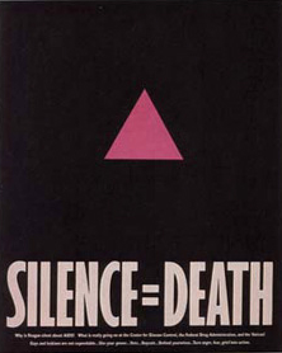
Emerging from ACT UP in 1988, Gran Fury was an AIDS activist artist collective from New York City consisting of 11 members including: Richard Elovich, Avram Finkelstein, Amy Heard, Tom Kalin, John Lindell, Loring McAlpin, Marlene McCarty, Donald Moffett, Michael Nesline, Mark Simpson and Robert Vazquez-Pacheco.
Germaine Koh is a Malaysian-born and Canadian conceptual artist based in Vancouver. Her works incorporate the artistic styles of neo-conceptual art, minimalism, and environmental art, and is concerned with the significance of everyday actions, familiar objects and common places.
The Philippines has one of the lowest rates of infection of HIV/AIDS, yet has one of the fastest growing number of cases worldwide. The Philippines is one of seven countries with growth in number of cases of over 25%, from 2001 to 2009.
Day Without Art (DWA) is an annual event where art institutions and other organizations organize programs to raise awareness of AIDS, remember people who have died, and inspire positive action. Initiated in 1988 by VisualAIDS from New York City (NYC), nowadays a global event.
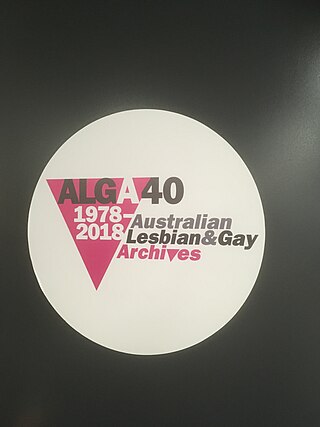
The Australian Queer Archives (AQuA) is a community-based non-profit organisation committed to the collection, preservation and celebration of material reflecting the lives and experiences of lesbian, gay, bisexual, transgender and intersex LGBTI Australians. It is located in Melbourne. The Archives was established as an initiative of the 4th National Homosexual Conference, Sydney, August 1978, drawing on the previous work of founding President Graham Carbery. Since its establishment the collection has grown to over 200,000 items, constituting the largest and most significant collection of material relating to LGBT Australians and the largest collection of LGBT material in Australia, and the most prominent research centre for gay, lesbian, bisexual, trans and intersex history in Australia.
The Institute of Cultural Inquiry (ICI) is a non-profit organization located in Los Angeles, California. Its mission is "to educate the public about the visual methods used in society to describe and discuss cultural phenomena." The ICI has sponsored art research, art creation in multiple media, projects, symposia, and publications related to its major areas of interest, which include the AIDS pandemic, obsolete technologies, and marginal cultural figures.
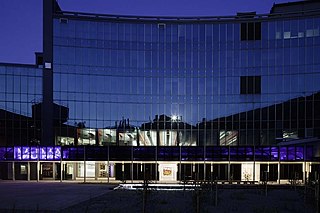
The Monash University Museum of Art (MUMA), formerly the Monash University Gallery, is a contemporary art museum on Monash University's Caulfield campus on Dandenong Road, Melbourne, Australia.
Gregg Bordowitz is a writer, artist, and activist who worked as a professor in the Video, New Media, and Animation department at The School of the Art Institute of Chicago and currently teaches at the Whitney Museum Independent Study Program.
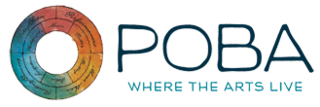
POBA is a non-profit, online arts community, launched in July, 2014 by The James Kirk Bernard Foundation.
Julieta Aranda is a conceptual artist that lives and works in Berlin and New York City. She received a BFA in filmmaking from the School of Visual Arts (2001) and an MFA from Columbia University (2006), both in New York. Her explorations span installation, video, and print media, with a special interest in the creation and manipulation of artistic exchange and the subversion of traditional notions of commerce through art making.
Rachel Gadsden is a UK-based visual artist and performance artist who is exhibited internationally and who works across the mainstream and disability art sectors. Gadsden has led a range of national and international participative programmes exploring themes of fragility and resilience. She has had a lung condition all her life and is injected by a syringe driver at one-minute intervals with the medication she needs to keep her alive.
Ivan Monforte is a Mexican performance artist based in New York. His work aspires to start a dialogue for disenfranchised members of the LGBT community about sexuality, love, sex, and loss.

Pillar of Fire is an illuminated glass sculpture in Washington, D.C. honoring Whitman-Walker Health and the healthcare workers who assisted people living with HIV/AIDS during the height of the AIDS epidemic. Designed by artist William Cochran, the sculpture is composed of 370 layers of float glass that changes colors throughout the day. It was installed in 2013 in front of the old Whitman-Walker Clinic site at 14th and S Streets NW. The design was inspired by the ancient tale of a pillar of fire that led Israelites in their crossing of the Red Sea and through the desert after they fled Egypt.
William "Bill" R. Olander was an American senior curator at the New Museum of Contemporary Art in New York City. He previously worked as curator and director of the Allen Memorial Art Museum. He was a co-founder of the arts organization Visual AIDS.
Chloe Dzubilo was an American artist, musician, and transgender activist. She was born in Connecticut.
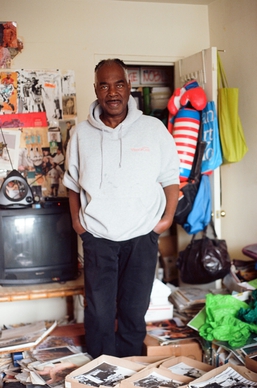
Frederick Weston (1946–2020) was an American interdisciplinary artist. Self-taught, he worked in collage, drawing, sculpture, photography, performance, and creative writing. He was raised in Detroit, Michigan and moved to New York City in the mid-1970s. Over the course of his time in New York, he developed a vast, encyclopedic archive of images and ephemera related to fashion, the body, advertising, AIDS, and queer subjects through his various jobs and social presence in hustler bars and gay nightlife. His early collages and photography, which often utilized likenesses of patrons, highlighted the social and communal nature of such institutions. Continuing this theme, in the mid-1990s, he became co-founder of guerrilla artist group Underground Railroad, which produced street art and outdoor installations. In his lifetime, he exhibited to small audiences in non-traditional art spaces and only in the last two years of his life did his work become widely known and appreciated in urban art circles.
References
- ↑ Cascone, Sarah (October 7, 2015). "'Postcards from the Edge' Returns in January". Artnet News. Retrieved November 19, 2021.
- ↑ Olson, Marisa S. (June 29, 2013). "Tune In, Black Out". Wired. Archived from the original on June 29, 2013. Retrieved December 2, 2020.
- ↑ "Day With(out) Art: The Banner Project 2000 and CineVirus: Make a Scene | Creative Time". March 9, 2013. Archived from the original on March 9, 2013. Retrieved December 2, 2020.
- 1 2 "Visual AIDS | About Us". Visual AIDS. Retrieved December 1, 2020.
- 1 2 "VAVA Voom Preview: Honoring the Founders". Visual AIDS. April 15, 2013. Retrieved May 5, 2021.
- ↑ "Visual AIDS". The Well Project. December 31, 2019. Retrieved December 1, 2020.
- ↑ "Artist-in-Residence". ResidencyUnlimited. January 2009. Retrieved December 1, 2020.
- ↑ Liscia, Valentina Di (May 11, 2020). "Visual AIDS Launches New Online Platform, "Not Over"". Hyperallergic. Retrieved December 1, 2020.
- ↑ "TRANSMISSIONS / Day With(out) Art 2020". www.artforum.com. Retrieved December 1, 2020.
- ↑ "Visual AIDS Archive and Artist Registry". Visual AIDS. Retrieved October 29, 2024.
- ↑ "ArchivesSpace: Visual AIDS Artists File" (PDF).
